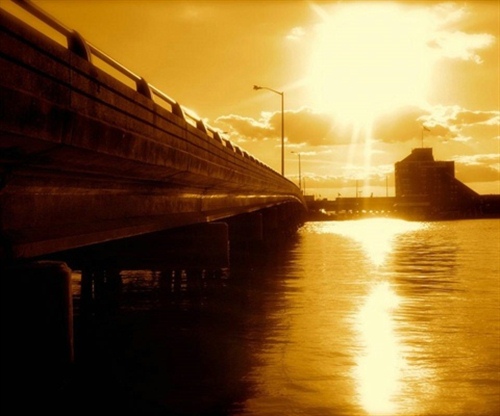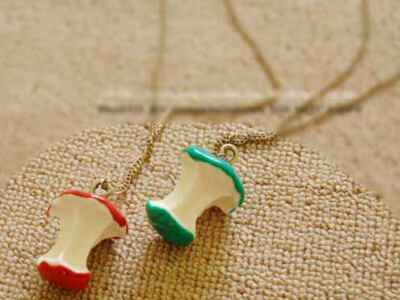
泰国的导游词
简介:泰国,旧称暹罗,可谓东南亚最具异国风情的国度。
泰国被世人称为“微笑的国土”拥有无数令人赞叹的名胜,独特的文化和持续相传的风俗习惯。
真诚好客的泰国人民热情款待外国友人到,从而即是友善之邦,又是逍遥胜地。
泰国位于中部,东临柬埔寨,西部和西北部接缅甸,东北邻老挝,南界,全国面积约为514,000平方公里,与法国等同,海岸线长2,600多公里。
泰国人将国家的疆域比作大象的头部,北部代表“象冠”、东北地方代表“象耳”、暹罗湾代表“象口”,而南方的长条带代表“象鼻”。
全国有七十六个府(省),573个县,国王深受全国人民爱戴和尊敬,对国王的任何不敬,可作为冒犯法律而受处罚。
在泰国人口中,73%的泰人务农,11%在曼谷,16%在其他城镇。
人口密度为每平方公里120人左右,而中部平原地区超过400人,三分之一以上人口集中在。
泰国是一个以佛教为主要宗教的国家,佛教是泰国的国教,享有“”的称号。
其比例佛教占95%。
泰国的语言主要为泰语,英语在城市及旅游景点可以通行,中文特别是潮州语,在华人集中居住点流行。
近些年华语(或称普通话国语)得到了较大的推行,但还未广泛流行。
泰国属于热带气候,有三个明显的季节,十一月至二月气候趋凉,属凉季。
三月到五月是夏季,六月到十月是雨季,每年的平均温度是摄氏28度,最高温度四月份的曼谷可达摄氏38℃以上,但在12月则维持在摄氏25℃左右. 泰国的国旗是红白蓝相间的五道条纹组成,红色代表国家和民族,蓝色代表王室,白色代表宗教。
国家、宗教和王室为泰国社会的三大支柱,而且是泰国社会经济和政治系统演进的力量。
曼谷是泰国首都,是泰国政治、经济、文化和交通的中心。
泰王国的国徽或称王徽是一只展翅的。
泰国Kingdom of Thailand :又称Siam暹逻国,泰王国 泰皇King Bhumibol Adulyadej :皇Rama 9 总理:塔信.秦那越 Thaksin Shinawatra 面积:517,000平方公里 人口:6,500万 首都:曼谷Bangkok 位置:位于东南亚之上。
北部和西部与缅甸接壤,东北部与老挝接壤,东南部与柬埔寨接壤,最南端与交接 种族:泰国人75%,华人11%,马来人3.5%,其他少数寮国人,印度人。
在整个泰国的成长历史过程中,泰国吸纳了许多作家,画家,雕刻家,舞蹈演员,音乐家和建筑师的有特别技能的移民。
他们丰富了泰国本土的文化,使之更加多元化。
宗教:佛教是超过90%泰国人的主要信仰,在每日的生活上都有深厚的影响。
除建立道德观念,提供精神的解脱以外,佛教也是艺术创造灵感的来源。
泰国人总是承传了宗教的自由的理想。
少数的教徒,,印度人和锡克教教徒同样自由地追求他们各自的信念。
各种宗教在泰国都受到宪法的保护,平等自由的存在发展。
语言:泰语为国语,然而,英语也被广泛的使用,特别在商店,餐馆,观光点,酒店,英语几乎是一种商业性的语言。
泰国的英语道路路标是全国性的。
主要城市:曼谷Bangkok,清迈 Chiang Mai ,芭他雅Pattaya 和 普吉Phuket 。
海岸线:泰国拥有大约2,500公里的海岸线。
西海岸滨濒临印度洋,东海岸延伸为暹逻湾。
环绕着东西海岸,泰国有大大小小一百多个岛屿。
动植物宝库:泰国发现有近300种的哺乳动物和亚洲最大的鸟类分布区。
有60个国家公园和30个野生动植物保护区。
泰国的电压为:220伏特 泰国的公路(连接全国各地),绝大部分是柏油马路。
运行的全国联网巴士大多数设计先进,舒适可靠,票价亦合适。
因此乘坐巴士到泰国各地长途旅行,或联系工作是上佳的选择。
巴士分普通车和空调车两种,车费空调车比普通车贵一倍左右,在泰国热带气候里,长途旅行最好是乘坐空调车;如短途线路则乘普通车 亦可。
在曼谷的长途汽车总站分为三个,各为东线、南线和北线(包括东北线)总站。
......导游词
各位朋友:我是导演小*,很高兴能认识各位。
下面,我把我们这次要去愉快旅行的东南亚个各位做一简单介绍。
东南亚(Southeast Asia)是第二次世界大战后期才出现的一个新的地区名称。
该地区共有11个国家:越南、老挝、柬埔寨、泰国、缅甸、马来西亚、新加坡、印度尼西亚、文莱、菲律宾、东帝汶(2002年5月20日,东帝汶民主共和国正式成立),面积约457万平方公里,人口约5.6亿。
世界各国习惯把越南、老挝、柬埔寨、泰国、缅甸五国称之为东南亚的“陆地国家”或“半岛国家”;而将马来西亚、新加坡、印度尼西亚、文莱、菲律宾五国称之为东南亚的“海洋国家”或“海岛国家”。
1967年,东南亚地区出现了一个“国家集团”,这就是“东南亚国家联盟”(简称“东盟”),发展至今已有10个成员国。
新加坡经济发达,经济和生活水平达发达国家水平,经济以服务业、航运业、物流业、金融业、科研、旅游业为主,近年积极发展高科技和教育。
马来西亚和泰国经济发展有一定基础,经济以旅游业、制造业、农业和渔业为主,近年积极发展航运业和物流业。
越南、菲律宾和印尼经济较落后,经济只有旅游业、制造业、农业和渔业。
缅甸、柬埔寨、老挝和东帝汶经济落后,缅甸、柬埔寨和老挝的经济只有旅游业和农业;东帝汶的经济只有渔业和石油出口。
文莱虽然人均GDP和发达国家相若,但经济并不发达,经济以石油出口和天然气出口为主,财富和中东产油国一样只集中在少数富裕阶层。
东南亚各国都有自己悠久的历史,且都是新兴的国家。
除新加坡外,均属发展中国家。
关于从瑞丽去缅甸
你好,这个问题你可以先打电话到那里的旅行社问一下,我自己以前去过那里多次,有从那里出境和入境,有在那里停留就回来的,有一次,那边发生小规模地方和政府军摩擦,所以中国境内不让非云南籍户口的人参加一日游。
我需要一份关于解说“归元寺”的导游词
中英文如下: 归元寺英文导游词 Guiyuan Temple Chinese Buddhist temples are never single buildings. They always consist of a group buildings following a fundamental patter, which can, however, be modified. The main buildings and their symmetrically corresponding secondary buildings form individual groups and courtyards. The entire temple complex is spacious. The building inside the complex are usually single-storied and the main halls are sometimes decorated with a double roof. The towers, pavilions and halls can be multi-storied structures. The Chinese temple complex has been subject to great structural changes throughout the centuries. But temple architects follow the basic principles of secular structures from the Tang Dynasty onwards. The complexes stand on a central axis, usually a north-south axis: east-west only as an exception. (Guiyuan Temple is just the very exception.) The main buildings are strung along this central axis, their broadest sides facing south or east. The most important and most frequently presented building inside a Buddhist temple complex are the main entrance gate, the bell and drum towers, the Hall of the Heavenly Kings, the Hall of the Buddha and a pagoda. Buddhism is said to be founded in India in the 6th century BC by Siddatha Gautama (BC565 –BC486), the son of a nobleman and member of the Kshatriya caste near the present borders of India and Nepal. Buddhism advocates that all the people are created equal and turns against the caste system of Brahmanism, so it was popular with the common people. It was said that Buddhism was spread to China in 2 BC. At the beginning, it was only regarded as a kind of witch. About 200 AD, Chinese version of Buddhist s criptures began to appear, and thus, Buddhist doctrines began to emerge with traditional Chinese religious thought. From 2nd century to late 6th century, translation and research of Buddhist sects with Chinese characteristics were becoming more and more popular and many temples were built, which reached its peak in Sui Dynasty (581AD-617AD) and Tang Dynasty (618-907). Some Buddhist sects with Chinese characteristics came into being. Buddhism exerts a great influence on Chinese philosophy, literature, art and folk customs. What is presented before our eyes is a copper statue of a famous bodhisattva in Hynayana Buddhism. Bodhisattva is a tittle which is only next to Buddha. This statue is the image of Avalokitesvara, which has been popular with Chinese people or more than 1,000 years. She is called the Goddess of Mercy cordially by Chinese and is regarded as the symbol of kindness, mercy and benevolence. When we visit the Avalokitesvara Pavilion after a while, I will give a detailed introduction about her. This copper statue was sent to Guiyuan Temple by Taiwan Buddhists in September 1990. It shows that all Chinese, whether in the mainland or in Taiwan, are eager for the reunion of the country, even including religion believers. The building we see now is the Buddha Hall where one certain Buddha and his two assistant bodhisattvases are worshiped. This Buddha is Amitabha Buddha. Amitabha means incomparable brightness. According to Buddhism, time and space is limitless and thus there are many many Buddhas in different spaces and times. But in a certain space or in a certain period of time, there is only one certain Buddha who is in charge of instructing all living creatures. Amitabha Buddha is the Buddha who presides over the Land of Ultimate Bliss in the west, which will come in the future. Buddhist s criptures describe the Land of Ultimate Bliss as a wonderland, in which no pain exists and the people enjoy their lives. In one word, it’s very attractive. Some people will think it must be very difficult to enter such a world. How can I go to such a paradise? Maybe I have to work hard and bear a lot of sufferings. In fact, it’s very easy to enter the world. He only need often murmur ‘May Buddha preserve us’ sincerely. It’s enough. You see, the statue in the middle is the very Buddha. On his left is the Goddess of Mercy. On his right is the other bodhisattva who follows the Buddha. It is said that he can save all the living creatures from three kinds of terrible disasters. Now, let’s step into the Buddhist s criptures Pavilion where the s criptures of Buddhism are kept. But I ‘m afraid what attracts our attention at the first sight must be this snow-white statue. It is a statue of Sakyamuni, the founder of Buddhism. This statue was carved out of a big piece of jade which is 2-meter-tall and weighs 3 tons. It was carved by Myanmar handicraftsmen and donated to the temple by the Rangoon Buddhists in 1935. If we watch the statue, we may sense that the peaceful expression on the Buddha’s face has brought us to a quiet and harmonious state. The last building we will visit is the Avalokitesvara Pavilion in the north yard. When we entered the yard just now we saw a statue of her. Now I’d like to introduce her carefully. As a goddess, she swore that she would not become a Buddha until all the living creatures suffering from pains were saved. So she became a bodhisattva who is most popular among the people and attracts the most believers of all the gods and goddesses in Buddhism. It was said that one would be saved from trouble and disaster as long as he (she) chanted her name and if it was heard by her. Thus she is called Guanshiyin, which means ‘hearing or looking on the voices of the suffering’. Because of her kind heart and benevolence she got another title ‘the Goddess of Mercy’. According to Buddhism, bodhisattvases have no distinction of sex, that is, they are neither male nor female, because they are immortals. But it’s very strange and interesting that most of bodhisattvases were engraved or carved in the images of various kinds of men in human society. Changes didn’t take place until an emperor’s mother thought it was inconvenient to worship a male bodhisattva in her bedroom. From then on, Guanshiyin, the bodhisattvas began to appear before her believers in the image of a beautiful and elegant lady. We’ll pay a visit to a very serious, sacred place. Generally, the place is regarded as the most holy by Buddhists. It is the Grand Hall, where the founder of Buddhism, Sakyamuni is worshiped. It is always the center of a Buddhist temple in construction and in Buddhists’ mind. The statue in the middle is Sakyamuni. According to Buddhism his mother gave birth to him in a garden. He belonged to Kshatreya Caste. He married his cousin when he was 16 or 17 years old. At the age of 29, he was confronted with the sights of an old man, a sick man, a corpse, and a wandering ascetic. With eyes opened to aspects of life newly revealed to him, he broke from the material world and became an ascetic. Six years later, he gave up mystic concentration that at last brought him enlightenment under a bo tree. He then founded an order of mendicants and spent his next 45 years preaching his ideas until his death. These two statue beside the Buddha are his two disciples. The one on the right was said to be Sakyamuni’s cousin and he had good memory so that he could remember all the Buddha told his disciples. The one on the left was said to be the lord of Brahmnism and he once was Sakyamuni’s tutor. But afterwards he was convinced by Buddhism after long-term debate between Buddhism and other religions and he accepted Sakyamuni as his tutor. Thus he became the eldest one of all Sakyamuni’s disciples. Next, we’ll pay a visit to the Ahrat Hall in the south court. The Ahrat Hall is an important structure in a Buddhist temple. But not all temples have an Ahrat Hall, especially, well-kept Ahrat Halls are very rare in China. This one is among them, and what’s more, it has its own unique characteristics. Generally, an Ahrat Hall is a square building. The building is subdivided into four small square courts so that the hall can get enough sunlight. This kind of structure show some lucky implies in Chinese Buddhist culture. Another characteristic about the hall lies in these sculptures themselves. They were neither made up of wood, nor stone, nor clay. A special way was taken in making them, which could prevents them from being burned, being soaked or being eaten by insects. All the sculptures were floating in water while Wuhan was flooded in 1954, but, surprisingly, they were sound and safe after the flood had receded. It was really a wonder. Ahrats are the immortals in Buddhism. But when you have a look around the sculptures, you may find from the expressions on their faces that they are so familiar to you. That’s only because they were molded on the basis of the people in the reality, so they are human beings in our daily life rather than immortals. Ahrats are the symbols of harmony, happiness, and good luck, so the Wuhan natives have got used to counting ahrats since ancient time to pray for peace. There are a few ways of counting ahrats. We can count from the first ahrat from left to right or from right to left, when we just enter the hall. We can also choose any ahrat as our starting point, and count in the same way, left to right or right to left. We should base counting on our own ages whatever we take. For example, I’m 25, so I should stop in front of the 25th ahrat from the starting ahrat. The sculpture in front of which I stop is my lucky ahrat. My lucky ahrat will accompany me to spend a peaceful and lucky year. Wouldn’t you like to have a try now? If you need, I can explain connotation of some ahrats. That’s all for the explanation to Guiyuan Temple. Thank you for your cooperation and understanding. You will have another 30 minutes to have a look around the temple. If you have any problems, do let me know. I would like to repeat our bus number, A3074. Please don’t forget. See you later. 各位游客朋友们: 我代表我们××旅行社欢迎大家的到来。
我姓张,大家就叫我小张好了
就好像人们常说的那样,相逢就是缘分。
能和大家相逢在美丽的江城武汉并和大家一起度过这段美好的时光,我感到非常荣幸。
这位是我们的司机倪师傅,驾驶经验非常丰富,所以各位在旅游途中可以放心地欣赏窗外武汉的美景。
今天就由我们两个为大家服务,大家有什么问题可以尽管提出来,我们将尽力为您解决。
希望能用我们的热心、耐心和细心换来你的放心、开心。
归元寺 归元寺位于武汉市内,是清顺治十五年(1658)浙江僧人白光、主峰来此创建的。
1983年被国务院确定为汉地全国重点佛教寺院。
现为湖北省佛教协会和武汉市佛教协会的所在地。
这里古树参天,花木繁茂,泉清水绿,曲径通幽,是“汉西一境”。
归元寺由北院、中院和南院三个各具特色的庭院组成,拥有藏经阁、大雄宝殿、罗汉堂三组主要建筑,占地面积17500多平方米。
北院的主要建筑是藏经楼,是一座两侧五开间的楼阁式建筑,高约25米,顶为大脊,鱼角搬爪,飞栱飞檐,古朴玲珑;当面为四柱通天,双凤朝阳,五龙戏珠。
整个建筑精巧壮观,金碧辉煌。
这里藏有许多佛教文物,除藏经外,还有佛像、法物、石雕、书画碑帖及外文典籍,是国内收藏佛像较多的一个佛寺。
1935年太虚法师出访缅甸时,仰光的佛教徒赠他一尊1吨多重的玉石雕成的释迦牟尼佛像,就供奉在这里。
这种佛像在我国只有三尊,其他二尊分别列供于北京和上海。
藏经阁里收藏的佛经有:清代《龙藏》一部,宋代影印本《碛砂藏》一部,清末民初上海印《频伽藏》一部。
另外还有两件珍品:一是清光绪元年(1875),湖南衡山69岁老人李舜千书写的“佛”字。
“佛”字是在长宽不超过6寸的纸上,由《金刚经》和《心经》原文共5424个字组成。
每个字只有芝麻大,肉眼分辨不清。
用30倍放大镜看,笔力挺秀,是书法珍品。
另一件是武昌僧人妙荣和尚刺血调和金粉抄成的《华严经》和《法华经》,字体娟秀,堪称精品。
中院的主体建筑是大雄宝殿。
该殿初建于清顺治十八年(1661),后经多次维修。
现大雄宝殿是清光绪三十四年(1908)重修。
大殿正中供奉着释迦牟尼坐像,两侧为其弟子阿难和迦叶像。
释迦偏袒左肩,结跏趺坐,庄严静穆。
佛像后背是用樟木雕刻而成的“五龙捧圣”的图案。
佛像前还有韦驮、弥勒、地藏像。
佛像后是一组海岛观音像。
只见海岛观音赤足站立,左右侍立着一龙女和童子,背后是一面高达八尺的泥塑悬崖峭壁,足下碧波万顷,怒涛汹涌。
整个塑像向前倾覆。
人们仰视上去,只见观音衣袖似在飘动,正在汹涌的波涛上迎面向你走来,增加了宗教艺术的感染力。
佛像前的供桌,是一件不可多得的木刻珍品。
供桌高4丈8尺,横阔1丈2尺,深宽2.5尺,前嵌垂栏,宽1.5尺,高0.6尺,其间分为五格,深画镂空。
图案描绘的是唐玄奘取经回长安时,君民夹道欢迎的场面:有唐僧、孙悟空、猪八戒、沙和尚等《西游记》人物,有李世民以下文武百官、侍卫、庶民百姓;有亭院殿墙,车马山水,幢幡宝盖,香炉蜡台等一应俱全。
综观全图,繁复活泼,盛况空前。
垂栏下沿为五龙云彩,周围匝绕,以四虎腿支地,生动有力。
相传这一樟木雕刻由十人历时一年才完成。
大雄宝殿前的韦驮殿内,供奉着一尊木雕韦驮像,身着铠甲,手持宝杵,威武挺立,用我国古代武将形象表达了古印度神话中“四大天王三十二将”之首的护法神形象。
这座木雕系用整块樟木雕成,线条刀法都是唐朝风格,是归元寺的艺术珍品,也是我国雕刻艺术品中的一件宝贵遗产。
归元寺属曹洞宗,又称归元禅寺,它与宝通寺、溪莲寺、正觉寺今称为武汉的四大丛林。
希望大家旅途愉快,谢谢。



